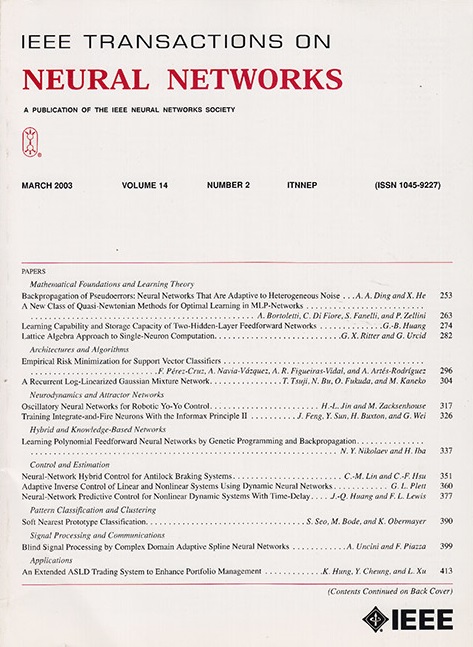Improving Robustness of Intent Detection Under Adversarial Attacks: A Geometric Constraint Perspective
IF 10.2
1区 计算机科学
Q1 COMPUTER SCIENCE, ARTIFICIAL INTELLIGENCE
IEEE transactions on neural networks and learning systems
Pub Date : 2023-08-11
DOI:10.1109/TNNLS.2023.3267460
引用次数: 0
Abstract
Deep neural networks (DNNs)-based natural language processing (NLP) systems are vulnerable to being fooled by adversarial examples presented in recent studies. Intent detection tasks in dialog systems are no exception, however, relatively few works have been attempted on the defense side. The combination of linear classifier and softmax is widely used in most defense methods for other NLP tasks. Unfortunately, it does not encourage the model to learn well-separated feature representations. Thus, it is easy to induce adversarial examples. In this article, we propose a simple, yet efficient defense method from the geometric constraint perspective. Specifically, we first propose an M-similarity metric to shrink variances of intraclass features. Intuitively, better geometric conditions of feature space can bring lower misclassification probability (MP). Therefore, we derive the optimal geometric constraints of anchors within each category from the overall MP (OMP) with theoretical guarantees. Due to the nonconvex characteristic of the optimal geometric condition, it is hard to satisfy the traditional optimization process. To this end, we regard such geometric constraints as manifold optimization processes in the Stiefel manifold, thus naturally avoiding the above challenges. Experimental results demonstrate that our method can significantly improve robustness compared with baselines, while retaining the excellent performance on normal examples.提高对抗性攻击下意图检测的鲁棒性:几何约束视角
在最近的研究中,基于深度神经网络(DNN)的自然语言处理(NLP)系统很容易被对抗性示例所欺骗。对话系统中的意图检测任务也不例外,但在防御方面的尝试相对较少。线性分类器和 softmax 的组合被广泛应用于其他 NLP 任务的大多数防御方法中。遗憾的是,这种方法并不鼓励模型学习分离良好的特征表征。因此,很容易诱发对抗性示例。在本文中,我们从几何约束的角度提出了一种简单而高效的防御方法。具体来说,我们首先提出了一种 M 相似度度量来缩小类内特征的方差。直观地说,更好的特征空间几何条件可以带来更低的误分类概率(MP)。因此,我们从理论保证的总体 MP(OMP)中推导出每个类别内锚的最优几何约束。由于最优几何条件的非凸特性,很难满足传统的优化过程。为此,我们将此类几何约束条件视为 Stiefel 流形中的流形优化过程,从而自然地避免了上述难题。实验结果表明,与基线方法相比,我们的方法能显著提高鲁棒性,同时在普通实例上保持优异的性能。
本文章由计算机程序翻译,如有差异,请以英文原文为准。
求助全文
约1分钟内获得全文
求助全文
来源期刊

IEEE transactions on neural networks and learning systems
COMPUTER SCIENCE, ARTIFICIAL INTELLIGENCE-COMPUTER SCIENCE, HARDWARE & ARCHITECTURE
CiteScore
23.80
自引率
9.60%
发文量
2102
审稿时长
3-8 weeks
期刊介绍:
The focus of IEEE Transactions on Neural Networks and Learning Systems is to present scholarly articles discussing the theory, design, and applications of neural networks as well as other learning systems. The journal primarily highlights technical and scientific research in this domain.
 求助内容:
求助内容: 应助结果提醒方式:
应助结果提醒方式:


